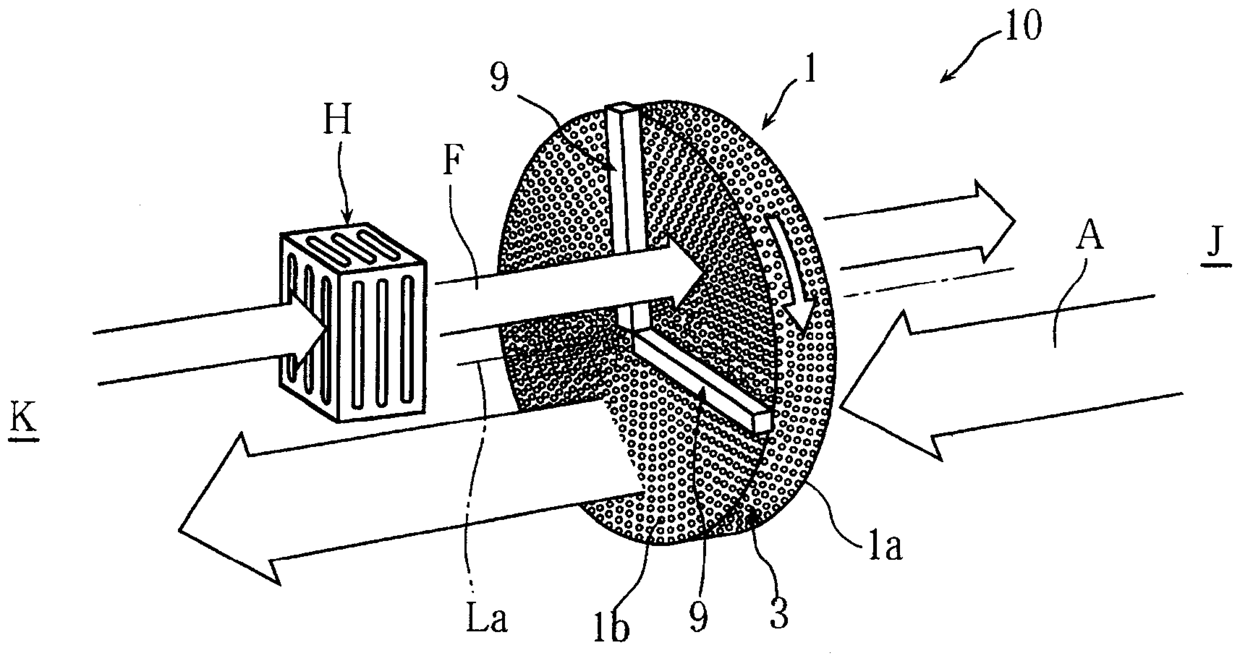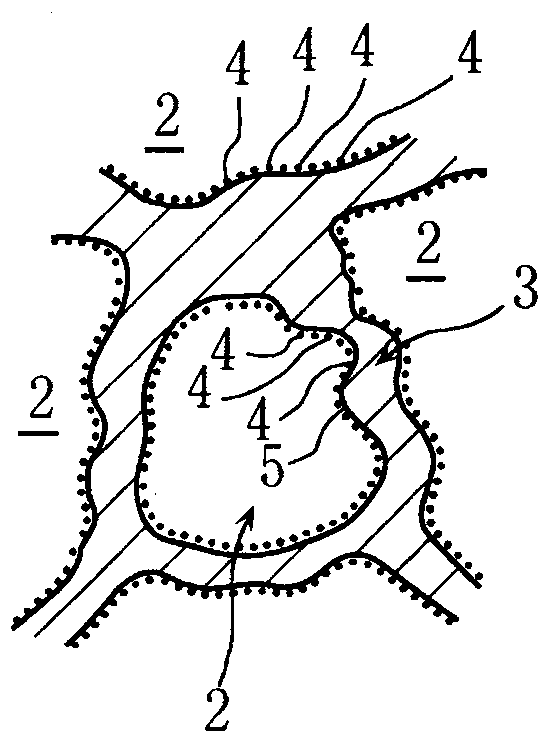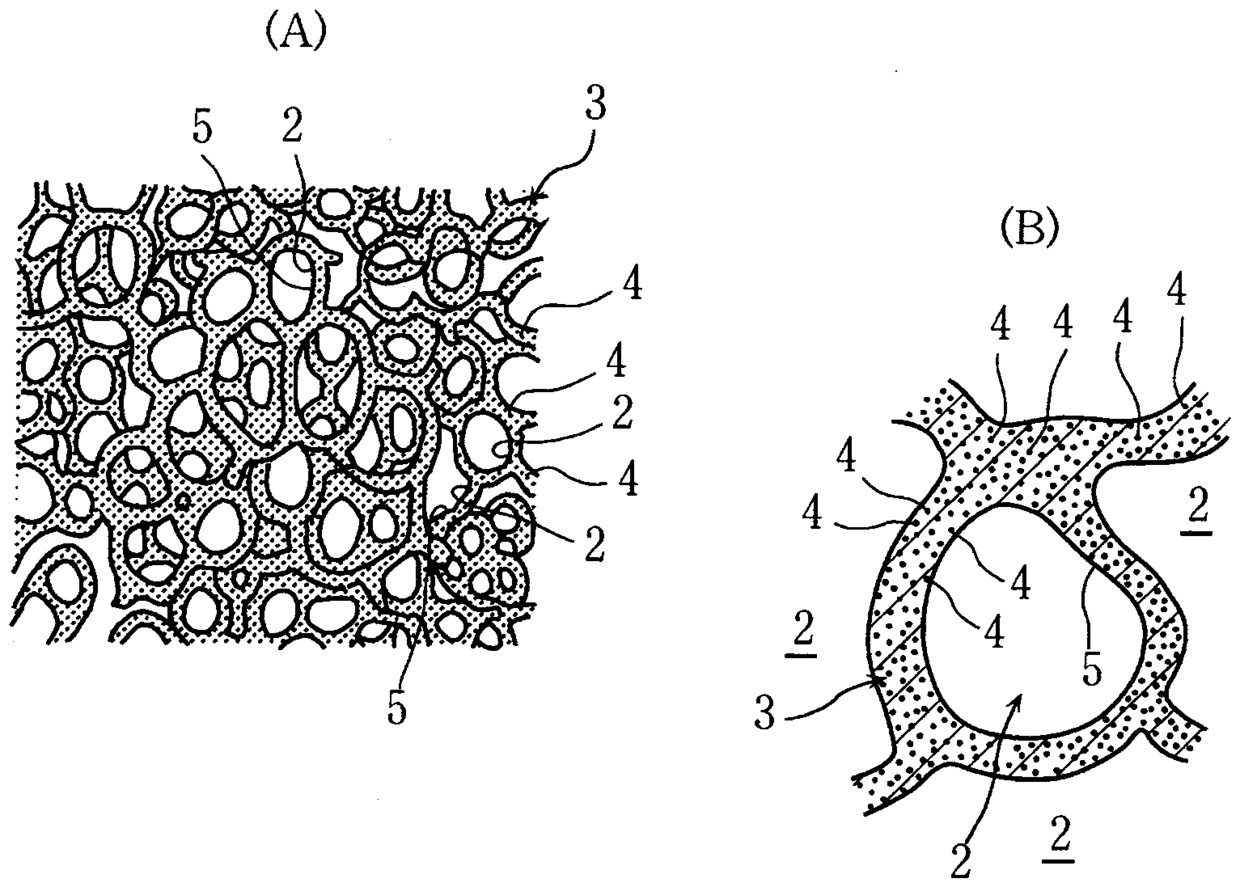Dehumidification and humidification rotor
A rotor and air hole technology, applied in the field of dehumidification and humidification rotors, can solve the problems of time-consuming, low manufacturing efficiency, and reduced range, and achieve the effects of easy manufacturing, good efficiency, and increased range
- Summary
- Abstract
- Description
- Claims
- Application Information
AI Technical Summary
Problems solved by technology
Method used
Image
Examples
Embodiment Construction
[0014] Hereinafter, the present invention will be described in detail based on the illustrated embodiments.
[0015] figure 1 Showing the first embodiment of the present invention, this dehumidification and humidification rotor is used in a desiccant air conditioner and is also called a desiccant rotor.
[0016] Such as figure 1 As shown, the desiccant-type air conditioner 10 is configured to rotate the dehumidification and humidification rotor 1 around the rotor axis La, suck in the process air A containing moisture (moisture) from the side J of the rotor axis, and pass the process air A A part of the dehumidifying and humidifying rotor 1 absorbs moisture, and the hot air F heated by a heat source H such as a heater passes through the remaining part of the dehumidifying and humidifying rotor 1 from the other side K of the rotor axis to discharge the adsorbed moisture to one side of the axis J Conveying hot air F containing moisture. The rotational speed of the dehumidifica...
PUM
| Property | Measurement | Unit |
|---|---|---|
| diameter | aaaaa | aaaaa |
Abstract
Description
Claims
Application Information
 Login to View More
Login to View More - R&D
- Intellectual Property
- Life Sciences
- Materials
- Tech Scout
- Unparalleled Data Quality
- Higher Quality Content
- 60% Fewer Hallucinations
Browse by: Latest US Patents, China's latest patents, Technical Efficacy Thesaurus, Application Domain, Technology Topic, Popular Technical Reports.
© 2025 PatSnap. All rights reserved.Legal|Privacy policy|Modern Slavery Act Transparency Statement|Sitemap|About US| Contact US: help@patsnap.com



